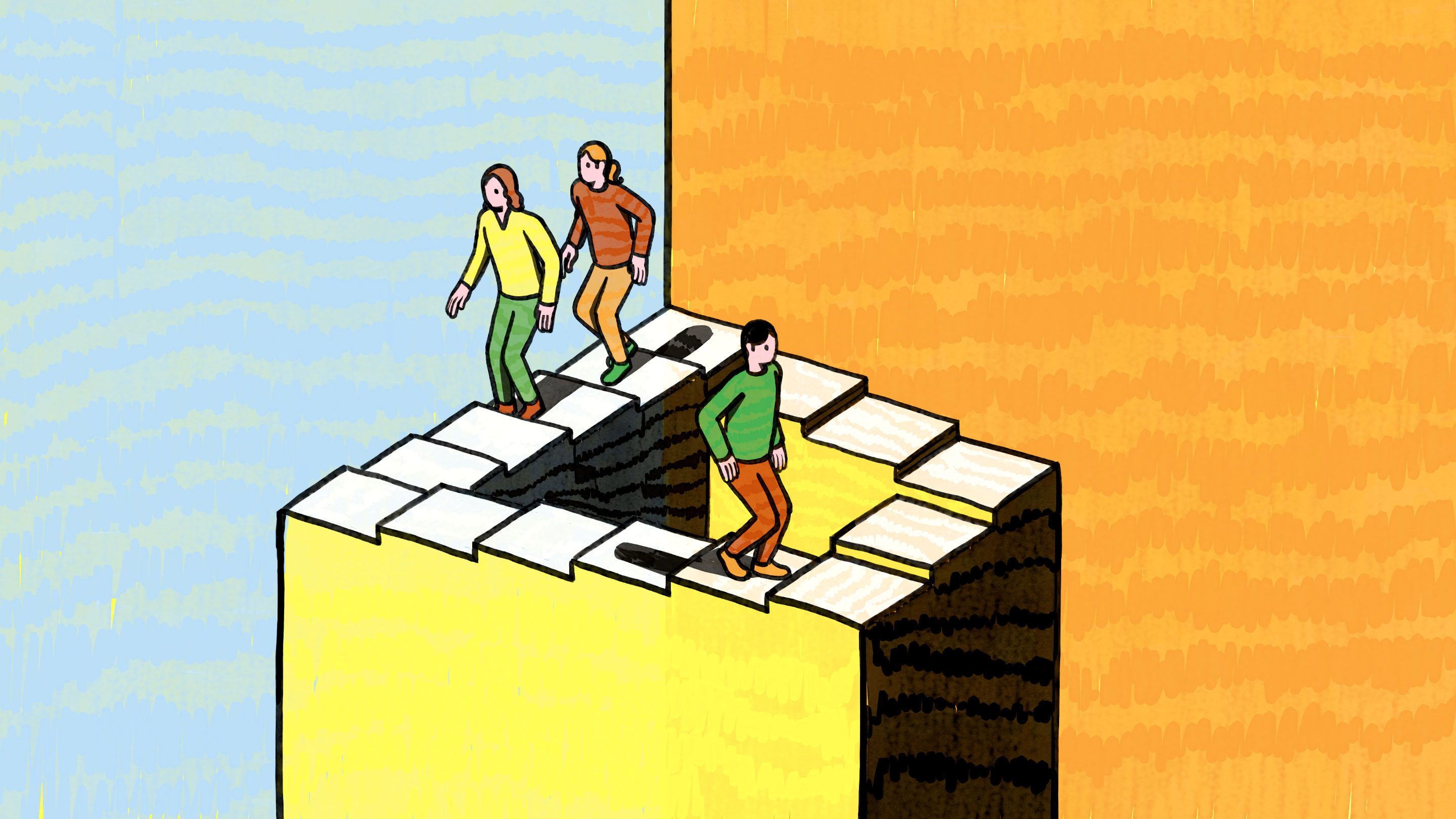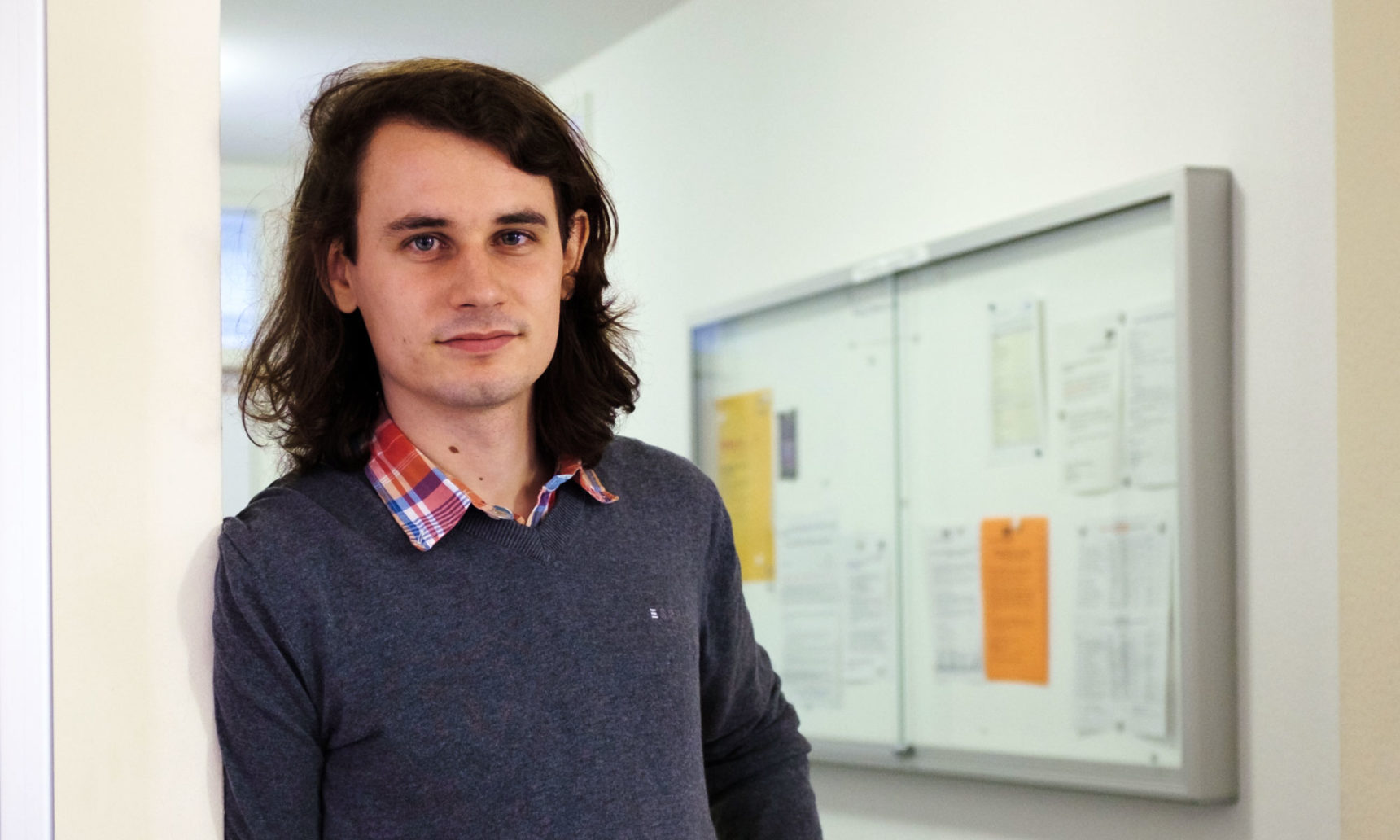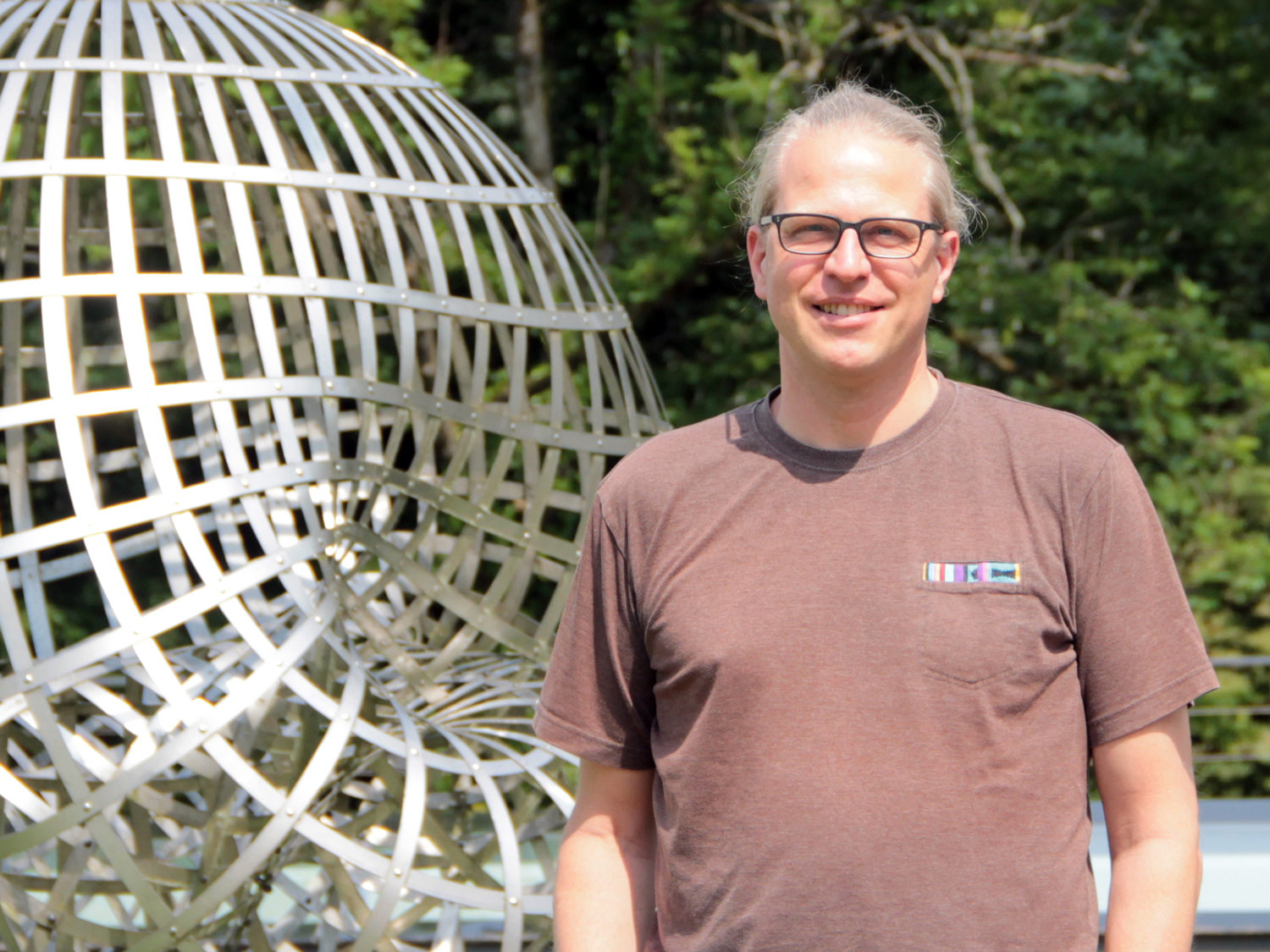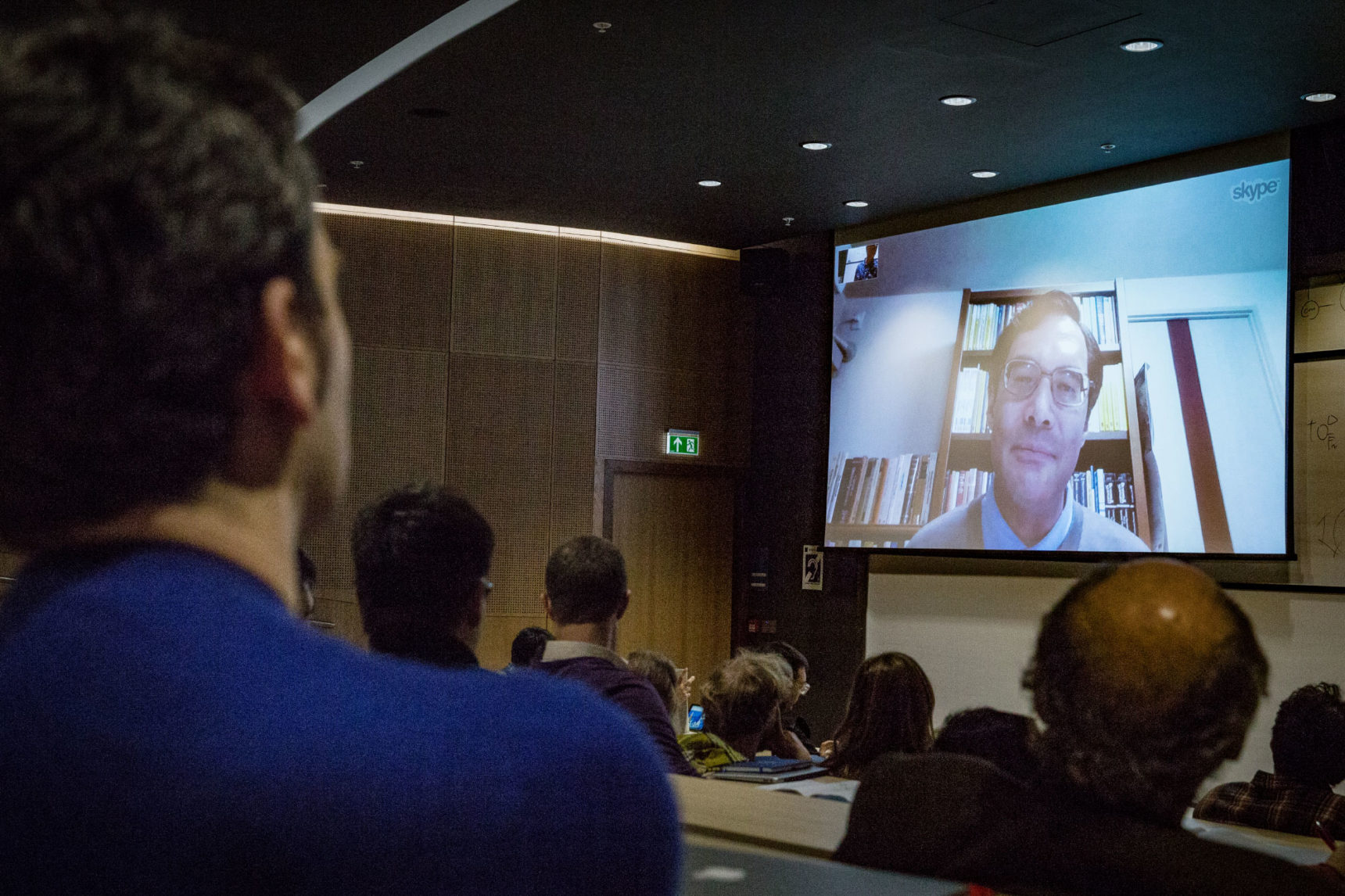Titans from mathematics have clashed over the epic evidence of the abc hypothesis
- Transfer
Two mathematicians claim to have found a hole in the very heart of the evidence that has been shaking the mathematical community for six years.

In a report published on the Internet in September 2018, Peter Scholze from the University of Bonn and Jacob Styx from the Goethe University in Frankfurt described what Styx calls "a serious and irreplaceable gap" in a huge series of voluminous works by Xinichi Motichuki , the famous genius mathematician from Kyoto University . Mochizuki's published on the Internet in 2012 allegedly prove the abc hypothesis , one of the most far-reaching problems in number theory .
Despite the many conferences that attempted to explain Mochizuki’s evidence, number theory specialists struggled with the underlying ideas. His series of works with a total volume of more than 500 pages are written in an obscure style, and refer to his previous work of about 500 pages, which leads to the emergence of a “feeling of endless regression,” as mathematician Brian Conrad of Stanford University put it . From those who studied evidence, mathematicians believe that 12 to 18 people are correct, as Ivan Fesenko of the University of Nottingham wrote to me by e-mail. But as commented
the situation in the discussion of the evidence in a blog last December, Konrad, only the mathematicians from the "Mochizuki inner circle" were responsible for the correctness of the proof. "There is no longer anyone willing to declare, even unofficially, the confidence in the fullness of the evidence."
However, as Frank Kalegari of the University of Chicago wrote in his blog in December, "mathematicians reluctantly state problems with the proof of Mochizuki, because they cannot point out a specific error." Now everything has changed. In their report, Scholz and Stix argue that the line of reasoning near the end of the proof of “Corollary 3.12” in the third of Mochizuki’s four papers is fundamentally erroneous. And this consequence is necessary for the proof of the abc-hypothesis offered to them.
“It seems to me that the issue with the abc hypothesis remains open,” said Scholze. “And every person has a chance to prove it.”

Peter Scholze
Scholze and Stix’s conclusions are based not only on their own study of the work, but also on the weekly visit Motizuki and his colleague Yuichiro Hoshi made to Kyoto University in March to discuss this evidence. Scholze says that this visit helped him and Styx tremendously to get to the core of their objections. As a result, a couple of scientists "came to the conclusion that there was no evidence," they write in the report.
However, this meeting ended with the dissatisfaction of the parties. Mochizuki could not convince Scholze and Stix that his proof was correct, but they could not convince him that it was wrong. Mochizuki has already posted the report of Scholze and Stix on his website, and added several objections to them .
In them, Mochizuki attributed the criticism of Scholze and Stix to the account of "certain fundamental misinterpretations" of his work. Their “negative attitude,” he writes, “does not indicate the presence of any flaws” in his theory.
Just as Mochizuki’s serious reputation led mathematicians to view his work as a serious attempt at proving a hypothesis, Scholz and Stix’s reputation ensures that mathematicians pay attention to what they want to say. Scholze, although he was only 30 years old, quickly rose to the top in his area. In August, he received the Fields Prize , the highest award in mathematics. Styx is an expert in Mochizuki research, anabelian geometry.
“Peter and Jacob are extremely cautious and thoughtful mathematicians,” said Konrad. “If they have any concerns, they really should be clarified.”
Stumbling block
The abc hypothesis, which Konrad called "one of the most prominent hypotheses in number theory," begins with one of the simplest equations that you can imagine: a + b = c. Three numbers a, b and c are positive integers that have no common prime divisors. That is, we can consider the equation 8 + 9 = 17 or 5 + 16 = 21, but not 6 + 9 = 15, since the numbers 6, 9 and 15 are divided by 3.
Taking such an equation, we can consider all the prime numbers, which divide any of the three numbers involved in the equation - for example, in the case of the equation 5 + 16 = 21, these prime numbers will be 2, 3, 5 and 7. Their product will be equal to 210 , and it is much larger than any of the numbers involved in the equation. Conversely, prime numbers 2, 3, and 5 are involved in equation 5 + 27 = 32, the product of which is 30 — and this is less than the number 32 participating in the equation. The product is so small, because the numbers 27 and 32 have very small simple dividers (3 and 2), which are simply repeated many times to get these numbers.
If you start playing with other abc triples, you may find that this second option is extremely rare. For example, among 3044 different triples, in which the members of a and b are less than 100, there are only seven, where the product of prime dividers is less than c. The abc hypothesis formulated in the 1980s formalizes the intuitive idea of the rarity of such triples.
Returning to the example 5 + 27 = 32. 32 is more than 30, but not much. This is less than 30 2 , or 30 1.5 , or even 30 1.02 , equal to 32.11. The abc hypothesis says that if you choose any degree greater than 1, then there will be only a finite number of abc triples, in which c will have more products of prime divisors raised to the chosen degree.
“The abc hypothesis is a very simple statement regarding multiplication and division,” said Minyun Kim of Oxford University. He said that with such a statement, "there is a feeling that you reveal some very fundamental structure of numerical systems that you have not seen before."
The simplicity of the equation a + b = c means that a wide range of other problems fall under its influence. For example, the great Fermat theorem is connected with equations of the form x n + y n = z n , and the Catalan hypothesis stating that 8 and 9 are the only consecutive two perfect powers [of numbers expressed as an integer in an integer degree / approx. transl.] (since 8 = 2 3and 9 = 3 2 ), speaks of an equation of the form x m + 1 = y n . The abc hypothesis (in a certain form) would give new proofs to these two theorems and solve a whole mountain of open problems related to it.

Jacob Stix
This hypothesis "seems to be on the border between the known and the unknown," wrote Dorian Goldfeld of Columbia University.
The scale of the consequences of proving the hypothesis convinced the number theory specialists that it would be very difficult to prove it. Therefore, when information spread in 2012 that Mochizuki presented evidence, many mathematicians plunged into his work with enthusiasm - but only to be stumped because of an unfamiliar language and an unusual presentation of information. Definitions stretched for several pages, followed by theorems with equally long statements, and their proofs were described with phrases like “immediately follows from the definition”.
"Every time I hear about the analysis of the work of Mochizuki, done by an expert (unofficial), his review turns out to be outrageously familiar: the wide fields of trivial things, followed by huge mountains of unjustified conclusions, "Calegari on his blog in December.
Scholze was one of the first readers of the work. He is known for being able to quickly absorb mathematics, penetrating deep into it, so he advanced further on many theorists, and finished what he called the “rough reading” of four major works shortly after their appearance. Scholze was embarrassed by long theorems with short proofs that seemed true to him, but unfounded. Later he wrote that in two intermediate works “little is happening.”
Then Scholze got to Corollary 3.12 in the third paper. Mathematicians usually use the word "consequence" to denote a theorem that is secondary to the previous, more important one. But in the case of Corollary 3.12 from Mochizuki, the mathematicians agree that this is the main theorem to prove the abc hypothesis. Without it, "there is no proof," wrote Kalegari. “This is a critical step.”
This consequence is the only theorem in two intermediate works, the proof of which takes more than a few lines — it stretches nine pages. Passing through them, Scholze reached the point at which he could no longer follow the logic.
At that time he was only 24, and he believed that the proof was incorrect. But he practically did not enter into the discussion of the works, unless he was asked directly about them. Indeed, in the end, he thought, other mathematicians would surely find in these works meaningful ideas that he missed. Or perhaps they will eventually come to the same conclusion as he. One way or another, he thought, the mathematical community would be able to sort things out.
Escher's Ladder
In the meantime, other mathematicians struggled with impassable work. Many had high hopes for a meeting dedicated to the work of Mochizuki, scheduled for the end of 2015 at Oxford University. But when several colleagues Mochizuki tried to explain the key ideas of the proof, a “cloud of fog” descended on the listeners, as Konrad wrote in a report shortly after the meeting. “It was necessary for people who understood this work to be more successfully explained to specialists in arithmetic geometry, which is its basis, ” he wrote .
Within a few days after his post, Konrad received unexpected letters from three mathematicians (one of whom was Scholz), describing the same thing: they were able to read and understand the works until they reached a certain point. “Each of the three was stopped by evidence 3.12,” Konrad later wrote .
Kim heard similar feedback on Corollary 3.12 and from another mathematician, Teruhisi Koshikawa, who works at Kyoto University. Styx also stumbled on this spot. Gradually, many number theory specialists found out that this consequence was a stumbling block, but it was not clear whether there was a hole in his proof or whether Mochizuki needed to simply explain his reasoning better.
Then in 2017, to the horror of many theorists, there were rumors that Mochizuki’s works were accepted for publication. Mochizuki himself was the editor-in-chief of this journal, the Publications of the Research Institute for Mathematical Sciences . Kalegari called this situation " bad looking " (although the editor in such situations is usually barred from making the decision). But most of all mathematicians were worried that the work was still unreadable.

Xinichi Mochizuki on video at the 2015 conference on his testimony
"Not a single expert who claims to understand the evidence failed to explain it to any of the many experts who remain confused," wrote Matthew Emertonfrom the University of Chicago.
Kalegari wrote an article describing this situation as a “ complete failure, ” and his point of view was picked up by outstanding theorists. “We have a ridiculous situation in which abc is considered a theorem in Kyoto and a hypothesis in all other places,” Kalegari wrote.
The PRIMS magazine soon responded to press inquiries with a statement in which it clarified that the works were not accepted for publication. However, even before that, Scholze decided to publicly state what he had already said in private conversations for a long time to many theorists. He decided that all this discussion of evidence was “too social.” “Everyone said that this evidence does not seem so, but no one said:“ There is a place where no one understood the evidence. ”
In the comments to the post, Kalegari Scholze wrote that he “could not follow the logic after fig. 3.8 in the proof of Corollary 3.12. He added that mathematicians, "who claim to understand the evidence, do not want to admit that they need to add something there."
Shigefumi Mori , Mochizuki 's colleague from Kyoto University, winner of the Fields Award, wrote Scholze with a proposal to arrange a meeting with Mochizuki. Scholze, in turn, contacted Styx, and in March, the couple went to Kyoto to discuss the stumbling block in evidence with Mochizuki and Hoshi.
Mochizuki's approach to the abc hypothesis takes the problem into the domain of elliptic curves., a special type of cubic equations with two variables, x and y. This transition, known even before Mochizuki, is performed simply — you need to associate each abc-equation with an elliptic curve, whose graph intersects the x-axis at points a, b and at the origin — however, it allows mathematicians to use the rich structure of elliptic curves that combine number theory with geometry, integral numbering and other areas. (The same transition is at the center of the proof of the Great Fermat theorem of 1994, performed by Andrew Wiles ).
As a result, the abc hypothesis reduces to proving the inequality between two quantities related to elliptic curves. Mochizuki's work translates this inequality into another form, which, as Stix said, can be represented as a comparison of the volumes of two sets. In Corollary 3.12, he offers his proof of this inequality, which, if true, would prove the abc hypothesis.
In the proof, as described by Scholze and Stix, the volumes of the two sets are treated as if they are inside two different copies of real numbers, represented as part of a circle of six different copies of real numbers, and also given a markup explaining how each copy is related to your neighbor in a circle. To track the relationship of volumes of sets with each other, it is necessary to understand how measurements of volume in one copy are related to measurements in other copies, as Styx said.
"If you have an inequality of two objects, but at the same time, the measuring ruler is compressed several times beyond your control, then you lose control over what inequality generally means," said Styx.
Scholze and Styx believe that it is at this critical moment of the proof that everything collapses. In Mochizuki markup, the measuring lines are logically compatible with each other. But when you go round the circle, said Styx, you have a ruler, not like the one that will be if you go the other way. This situation, he said, resembles Escher 's famous closed staircase , on which you can climb, and then find yourself in the same place [more correctly, this is Penrose's staircase , based on which Escher made a famous drawing / approx. trans.].
Scholze and Styx concluded that this incompatibility of volume measurements means that the wrong values are compared in the final inequality. And if you correct everything so that the volumes become comparable, then the inequality becomes meaningless, they say.
Scholze and Stix “found a specific reason why the evidence does not work,” said Kiran Kedlaya, a mathematician at the University of California at San Diego, who studied in detail the work of Mochizuki. “So, if the proof is true, it should work with something else, with something less explicit,” than what Scholz and Styx describe.
Mochizuki argues that this is the presence of something less obvious. He writes that Scholze and Stix are mistaken, arbitrarily equating mathematical objects that should be considered different. When he told his colleagues about the nature of the objections of Scholze and Stix, he writes, his description “was met with remarkably general surprise and even distrust (and then also ridiculed) that such an incredible misunderstanding could have arisen at all.”
Now, mathematicians will need to digest the arguments of Scholze and Stix and Mochizuki's answer. Scholze hopes that, unlike the situation with Mochizuki’s original work, this process will not last long, since their nature with the Styx objections is not so technically complex. Other theorists “should be able to easily follow the line of our discussion that we had with Mochizuki,” he said.
Mochizuki, everything is completely different. From his point of view, criticism of Scholze and Stix comes from "lack of time to properly delve into the mathematics under discussion," which may be due to "a feeling of deep discomfort or unfamiliarity with the new way of thinking about familiar mathematical objects."
Mathematicians, who were skeptical about the proof of Mochizuki before, may well decide that the Scholz and Stix report puts an end to this story, Kim said. Others will want to study the reports themselves, and this, Kim believes, has already begun. “I don’t think that I can avoid having to check everything myself before I decide something for myself,” he wrote by mail.
Over the past few years, many number theory specialists have stopped trying to understand the work of Mochizuki. But if Mochizuki or his followers can provide a detailed and coherent explanation of why the picture of Scholze and Stix is too simplified (if so), “it can do a lot to remove the fatigue associated with this issue and inspire people to try new ones” - said Kedlay.
Meanwhile, Scholze says: “I think this cannot be considered evidence until Mochizuki makes a serious alteration and does not explain the key step much better.” He himself, in his words, “does not see the key idea that could lead us closer to the proof of the abc hypothesis”.
Regardless of the final outcome of the discussion, the clear identification of a specific place for the proof of Mochizuki should clarify everything very well, said Kim. “What Jacob and Peter succeeded in doing a very important service to the community,” he said. “Whatever happens, I’m sure these reports will be some kind of progress.”
